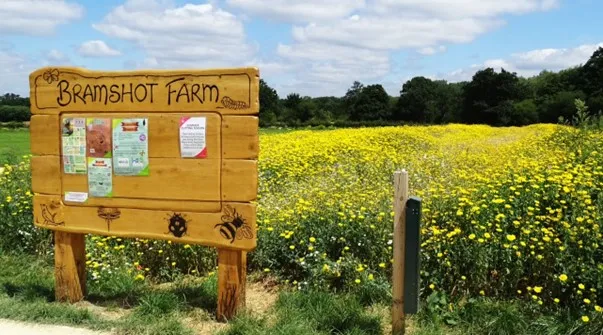Regularly cut grassland management options

An example of amenity grassland in Hart
Amenity grassland
Where: formal play and recreation sites.
Environmental benefits: low – species poor: low in biodiversity value)
Management/cutting frequency: high – up to every two weeks
Considerations: provides a safe environment and surface for play and recreation contributing to enhanced Health and Wellbeing for visitors and users. Allows for visibility at road junctions. Provides a neat, tidy and well-maintained appearance suited to more formal areas. Public open spaces are dedicated under planning and have requirements for how they are managed.

An example of spring grassland in Hart
Spring grassland
Where: low-value grassland that can be allowed to grow longer in spring where health and safety allows.
Environmental benefits: medium low – species poor. Potential increase in spring wildflowers of benefit to insects and pollinators.
Management/cutting frequency: Medium high – frequent cutting except in May. Outer edges and edges along pathways cut every two weeks for neatness and access.
Considerations: HDC support the no mow May movement, but this is not always practical. Grounds maintenance cut on a 5-week rotation, if all grass was not cut in May, then some areas will not get cut for 9 weeks. Longer cuttings post May requires more effort and blowing of cuttings off footpaths and the need for more frequent cutting of outer edges and paths means there is no reduction in vehicle movements (so is unlikely to result in a carbon saving).

An example of annual wildflower planting in Hart
Annual wildflower planting
Where: Showcase sites such as country parks or areas where a high impact display and show of colour would have maximum visitor benefit.
Environmental benefits: medium high – species rich. Good for pollinating insects
Management/cutting frequency: medium low – annual soil preparation, weed control and reseeding
Considerations: annuals are typically bright, striking flowers (such as poppies and cornflowers) which give a great visual display. They are costly to install and maintain due to the need for annual reseeding and soil preparation. Requires the use of herbicides to remove weeds to give the wildflowers a head start.

An example of perennial wildflower planting in Hart
Perennial wildflower planting
Where: countryside sites, open spaces where a more natural aesthetic is appropriate.
Environmental benefits: high – species rich. Good for pollinating insects.
Management/Cutting Frequency: low – initial soil preparation, weed control and seeding. Annual cut and collection of arisings to be taken offsite.
Considerations: less bright and colourful than annuals but more natural and some species (such as foxgloves and oxeye daisies) can be attractive. No need for annual reseeding or herbicide application once established. Costly to install. Visual impact can diminish over time. Annual collection and removal of arisings adds to maintenance costs.